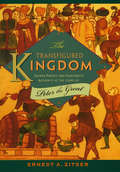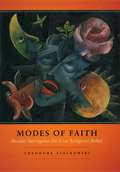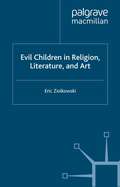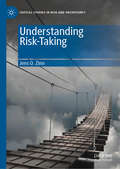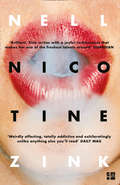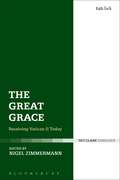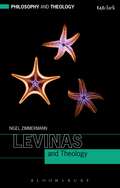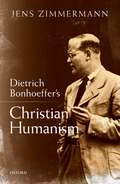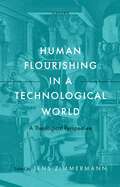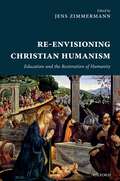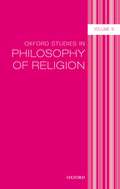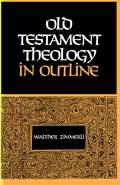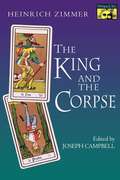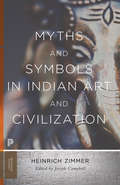- Table View
- List View
The Transfigured Kingdom: Sacred Parody and Charismatic Authority at the Court of Peter the Great (Studies of the Harriman Institute)
by Ernest A. ZitserIn this richly comparative analysis of late Muscovite and early Imperial court culture, Ernest A. Zitser provides a corrective to the secular bias of the scholarly literature about the reforms of Peter the Great. Zitser demonstrates that the tsar's supposedly "secularizing" reforms rested on a fundamentally religious conception of his personal political mission. In particular, Zitser shows that the carnivalesque (and often obscene) activities of the so-called Most Comical All-Drunken Council served as a type of Baroque political sacrament—a monarchical rite of power that elevated the tsar's person above normal men, guaranteed his prerogative over church affairs, and bound the participants into a community of believers in his God-given authority ("charisma"). The author suggests that by implicating Peter's "royal priesthood" in taboo-breaking, libertine ceremonies, the organizers of such "sacred parodies" inducted select members of the Russian political elite into a new system of distinctions between nobility and baseness, sacrality and profanity, tradition and modernity.Tracing the ways in which the tsar and his courtiers appropriated aspects of Muscovite and European traditions to suit their needs and aspirations, The Transfigured Kingdom offers one of the first discussions of the gendered nature of political power at the court of Russia's self-proclaimed "Father of the Fatherland" and reveals the role of symbolism, myth, and ritual in shaping political order in early modern Europe.
Modes of Faith: Secular Surrogates for Lost Religious Belief
by Theodore ZiolkowskiIn the decades surrounding World War I, religious belief receded in the face of radical new ideas such as Marxism, modern science, Nietzschean philosophy, and critical theology. Modes of Faith addresses both this decline of religious belief and the new modes of secular faith that took religion’s place in the minds of many writers and poets. Theodore Ziolkowski here examines the motives for this embrace of the secular, locating new modes of faith in art, escapist travel, socialism, politicized myth, and utopian visions. James Joyce, he reveals, turned to art as an escape while Hermann Hesse made a pilgrimage to India in search of enlightenment. Other writers, such as Roger Martin du Gard and Thomas Mann, sought temporary solace in communism or myth. And H. G. Wells, Ziolkowski argues, took refuge in utopian dreams projected in another dimension altogether. Rooted in innovative and careful comparative reading of the work of writers from France, England, Germany, Italy, and Russia, Modes of Faith is a critical masterpiece by a distinguished literary scholar that offers an abundance of insight to anyone interested in the human compulsion to believe in forces that transcend the individual.
Modes of Faith: Secular Surrogates for Lost Religious Belief
by Theodore ZiolkowskiIn the decades surrounding World War I, religious belief receded in the face of radical new ideas such as Marxism, modern science, Nietzschean philosophy, and critical theology. Modes of Faith addresses both this decline of religious belief and the new modes of secular faith that took religion’s place in the minds of many writers and poets. Theodore Ziolkowski here examines the motives for this embrace of the secular, locating new modes of faith in art, escapist travel, socialism, politicized myth, and utopian visions. James Joyce, he reveals, turned to art as an escape while Hermann Hesse made a pilgrimage to India in search of enlightenment. Other writers, such as Roger Martin du Gard and Thomas Mann, sought temporary solace in communism or myth. And H. G. Wells, Ziolkowski argues, took refuge in utopian dreams projected in another dimension altogether. Rooted in innovative and careful comparative reading of the work of writers from France, England, Germany, Italy, and Russia, Modes of Faith is a critical masterpiece by a distinguished literary scholar that offers an abundance of insight to anyone interested in the human compulsion to believe in forces that transcend the individual.
The Juggler of Notre Dame and the Medievalizing of Modernity: Volume 4: Picture That: Making a Show of the Jongleur
by Jan M. ZiolkowskiThis ambitious and vivid study in six volumes explores the journey of a single, electrifying story, from its first incarnation in a medieval French poem through its prolific rebirth in the nineteenth and twentieth centuries. The Juggler of Notre Dame tells how an entertainer abandons the world to join a monastery, but is suspected of blasphemy after dancing his devotion before a statue of the Madonna in the crypt; he is saved when the statue, delighted by his skill, miraculously comes to life. Jan Ziolkowski tracks the poem from its medieval roots to its rediscovery in late nineteenth-century Paris, before its translation into English in Britain and the United States. The visual influence of the tale on Gothic revivalism and vice versa in America is carefully documented with lavish and inventive illustrations, and Ziolkowski concludes with an examination of the explosion of interest in The Juggler of Notre Dame in the twentieth century and its place in mass culture today. Volume 4 examines the famous Le jongleur de Notre Dame by the French composer Jules Massenet, which took Europe by storm after premiering in 1902 and then crossed the Atlantic to the impresario Oscar Hammerstein and the diva Mary Garden, who gave the opera new legs as a female juggler. Presented with great clarity and simplicity, Ziolkowski's work is accessible to the general reader, while its many new discoveries will be valuable to academics in such fields and disciplines as medieval studies, medievalism, philology, literary history, art history, folklore, performance studies, and reception studies.
The Juggler of Notre Dame and the Medievalizing of Modernity: Volume 6: War and Peace, Sex and Violence
by Jan M. ZiolkowskiThis ambitious and vivid study in six volumes explores the journey of a single, electrifying story, from its first incarnation in a medieval French poem through its prolific rebirth in the nineteenth and twentieth centuries. The Juggler of Notre Dame tells how an entertainer abandons the world to join a monastery, but is suspected of blasphemy after dancing his devotion before a statue of the Madonna in the crypt; he is saved when the statue, delighted by his skill, miraculously comes to life. Jan Ziolkowski tracks the poem from its medieval roots to its rediscovery in late nineteenth-century Paris, before its translation into English in Britain and the United States. The visual influence of the tale on Gothic revivalism and vice versa in America is carefully documented with lavish and inventive illustrations, and Ziolkowski concludes with an examination of the explosion of interest in The Juggler of Notre Dame in the twentieth century and its place in mass culture today. In this concluding volume, Ziolkowski explores the popularity of The Juggler of Notre Dame from the 1930s through the Second World War, especially in the Allied Resistance. Its popularity in the United States was subsequently maintained by figures as diverse as Tony Curtis and W. H. Auden, and although recently the story and medievalism have lost ground, the future of both holds promise. Presented with great clarity and simplicity, Ziolkowski's work is accessible to the general reader, while its many new discoveries will be valuable to academics in such fields and disciplines as medieval studies, medievalism, philology, literary history, art history, folklore, performance studies, and reception studies.
The Juggler of Notre Dame and the Medievalizing of Modernity: Volume 5: Tumbling into the Twentieth Century
by Jan M. ZiolkowskiThis ambitious and vivid study in six volumes explores the journey of a single, electrifying story, from its first incarnation in a medieval French poem through its prolific rebirth in the nineteenth and twentieth centuries. The Juggler of Notre Dame tells how an entertainer abandons the world to join a monastery, but is suspected of blasphemy after dancing his devotion before a statue of the Madonna in the crypt; he is saved when the statue, delighted by his skill, miraculously comes to life. Jan Ziolkowski tracks the poem from its medieval roots to its rediscovery in late nineteenth-century Paris, before its translation into English in Britain and the United States. The visual influence of the tale on Gothic revivalism and vice versa in America is carefully documented with lavish and inventive illustrations, and Ziolkowski concludes with an examination of the explosion of interest in The Juggler of Notre Dame in the twentieth century and its place in mass culture today. In this volume Jan Ziolkowski follows the juggler of Notre Dame as he cavorts through new media, including radio, television, and film, becoming closely associated with Christmas and embedded in children’s literature. Presented with great clarity and simplicity, Ziolkowski's work is accessible to the general reader, while its many new discoveries will be valuable to academics in such fields and disciplines as medieval studies, medievalism, philology, literary history, art history, folklore, performance studies, and reception studies.
Reading the Juggler of Notre Dame: Medieval Miracles and Modern Remakings
by Jan M. ZiolkowskiIn this two-part anthology, Jan M. Ziolkowski builds on themes uncovered in his earlier The Juggler of Notre Dame and the Medievalizing of Modernity. Here he focuses particularly on the performing arts. Part one contextualises Our Lady’s Tumbler, a French poem of the late 1230s, by comparing it with episodes in the Bible and miracles in a wide variety of medieval European sources. It relates this material to analogues and folklore across the ages from, among others, Persian, Jewish and Hungarian cultures. Part two scrutinizes the reception and impact of the poem with reference to modern European and American literature, including works by the Nobel prize-winner Anatole France, professor-poet Katharine Lee Bates, philosopher-historian Henry Adams and poet W.H. Auden. This innovative collection of sources introduces readers to many previously untranslated texts, and invites them to explore the journey of Our Lady’s Tumbler across both sides of the Atlantic. Reading the Juggler of Notre Dame: Medieval Miracles and Modern Remakings will benefit scholars and students alike. The short introductions and numerous annotations shed light on unusual beliefs and practices of the past, making the readings accessible to anyone with an interest in the arts and an openness to the Middle Ages.
Evil Children in Religion, Literature, and Art (Cross Currents in Religion and Culture)
by E. ZiolkowskiEvil Children in Religion, Literature and Art explores the genesis, development, and religious significance of a literary and iconographic motif, involving a gang of urchins, usually male, who mock or assault a holy or eccentric person, typically an adult. Originating in the biblical tale of Elisha's mockery (2 Kings 2.23-24), this motif recurs in literature, hagiography, and art, from antiquity up to our own time, strikingly defying the conventional Judeo-Christian and Romantic image of the child as a symbol of innocence.
Understanding Risk-Taking (Critical Studies in Risk and Uncertainty)
by Jens O. ZinnThis book outlines and systematises findings from a growing body of research that examines the different rationales, dimensions and dynamics of risk-taking in current societies; providing insight into the different motivations and social roots of risk-taking to advance scholarly debates and improve social regulation. Conceptually, the book goes beyond common approaches which problematise socially undesirable risk-taking, or highlight the alluring character of risk-taking. Instead, it follows a broadly interpretivist approach and engages in examining motives, control, routinisation, reflexivity, skills, resources, the role of identity in risk-taking and how these are rooted in and framed by different social forces. Zinn draws on qualitative studies from different theoretical and conceptual backgrounds such as phenomenology, hermeneutics, pragmatism, feminism, class analysis, theory of practice and discourse analysis among others, to outline key distinctions and concepts central to the understanding of risk-taking. It will be a key resource for everyone who is concerned with the understanding and management of risk-taking in all kinds of social domains, such as immigration, youth, leisure sports, crime, health, finance, and social policy.
Nicotine
by Nell ZinkFrom the much acclaimed author of MISLAID and THE WALLCREEPER, a fierce and audaciously funny novel of families—both the ones we’re born into and the ones we create—a story of obsession, idealism, and ownership, centered around a young woman who inherits her bohemian late father’s childhood home.
The Great Grace: Receiving Vatican II Today
by Rev'D Nigel ZimmermannNigel Zimmermann presents critical reflections from leading Catholic prelates and scholars on the significance of the Second Vatican Council fifty years after it began. These include two senior Cardinals, one of whom is the head of the Congregation of Bishops and the other a member of Pope Francis' new advisory body on reforming the Roman Curia, as well as Prefect of the Secretariat for the Economy. Together with thinkers from North America, the UK, Rome and Australia, they take up key themes from the Conciliar documents and assess the reception of the Council half a century on from its inception. In doing so, they open up new avenues for thinking through the authentic witness and teaching of the most important ecclesiastical event of the twentieth century. These avenues include discussion of themes such as the liturgy, communio, the Council in its historical context, the role of the laity, communicating the Council in a social media world, and the task of mission in the future. This volume marks a turning point in the Council's reception in the wider Church.
The Great Grace: Receiving Vatican II Today
by Nigel ZimmermannNigel Zimmermann presents critical reflections from leading Catholic prelates and scholars on the significance of the Second Vatican Council fifty years after it began. These include two senior Cardinals, one of whom is the head of the Congregation of Bishops and the other a member of Pope Francis' new advisory body on reforming the Roman Curia, as well as Prefect of the Secretariat for the Economy. Together with thinkers from North America, the UK, Rome and Australia, they take up key themes from the Conciliar documents and assess the reception of the Council half a century on from its inception. In doing so, they open up new avenues for thinking through the authentic witness and teaching of the most important ecclesiastical event of the twentieth century. These avenues include discussion of themes such as the liturgy, communio, the Council in its historical context, the role of the laity, communicating the Council in a social media world, and the task of mission in the future. This volume marks a turning point in the Council's reception in the wider Church.
Levinas and Theology (Philosophy and Theology)
by Nigel ZimmermannThe thought of Emmanuel Levinas is of increasing importance for those working in the diverse fields of phenomenology and continental philosophy, French studies, Jewish studies, ethics, politics and religious studies. In this book, Nigel Zimmermann gives proper attention to the 'incarnate' aspect of the 'other' in Levinas' work, providing a theological reading that explores the basic strands of Levinas' thinking regarding the concrete nature of human living. Human communities, in which politics inevitably plays a crucial role, may learn much from the theological shape of Levinas' philosophy. In all his writings, Levinas cannot be understood apart from his roles as a Talmudic commentator and as a radical thinker who suffered personally under the shadow of the Holocaust.
Levinas and Theology (Philosophy and Theology)
by Nigel ZimmermannThe thought of Emmanuel Levinas is of increasing importance for those working in the diverse fields of phenomenology and continental philosophy, French studies, Jewish studies, ethics, politics and religious studies. In this book, Nigel Zimmermann gives proper attention to the 'incarnate' aspect of the 'other' in Levinas' work, providing a theological reading that explores the basic strands of Levinas' thinking regarding the concrete nature of human living. Human communities, in which politics inevitably plays a crucial role, may learn much from the theological shape of Levinas' philosophy. In all his writings, Levinas cannot be understood apart from his roles as a Talmudic commentator and as a radical thinker who suffered personally under the shadow of the Holocaust.
Dietrich Bonhoeffer's Christian Humanism
by Jens ZimmermannJens Zimmermann locates Bonhoeffer within the Christian humanist tradition extending back to patristic theology. He begins by explaining Bonhoeffer's own use of the term humanism (and Christian humanism), and considering how his criticism of liberal Protestant theology prevents him from articulating his own theology rhetorically as a Christian humanism. He then provides an in-depth portrayal of Bonhoeffer's theological anthropology and establishes that Bonhoeffer's Christology and attendant anthropology closely resemble patristic teaching. The volume also considers Bonhoeffer's mature anthropology, focusing in particular on the Christian self. It introduces the hermeneutic quality of Bonhoeffer's theology as a further important feature of his Christian humanism. In contrast to secular and religious fundamentalisms, Bonhoeffer offers a hermeneutic understanding of truth as participation in the Christ event that makes interpretation central to human knowing. Having established the hermeneutical structure of his theology, and his personalist configuration of reality, Zimmermann outlines Bonhoeffer's ethics as 'Christformation'. Building on the hermeneutic theology and participatory ethics of the previous chapters, he then shows how a major part of Bonhoeffer's life and theology, namely his dedication to the Bible as God's word, is also consistent with his Christian humanism.
Dietrich Bonhoeffer's Christian Humanism
by Jens ZimmermannJens Zimmermann locates Bonhoeffer within the Christian humanist tradition extending back to patristic theology. He begins by explaining Bonhoeffer's own use of the term humanism (and Christian humanism), and considering how his criticism of liberal Protestant theology prevents him from articulating his own theology rhetorically as a Christian humanism. He then provides an in-depth portrayal of Bonhoeffer's theological anthropology and establishes that Bonhoeffer's Christology and attendant anthropology closely resemble patristic teaching. The volume also considers Bonhoeffer's mature anthropology, focusing in particular on the Christian self. It introduces the hermeneutic quality of Bonhoeffer's theology as a further important feature of his Christian humanism. In contrast to secular and religious fundamentalisms, Bonhoeffer offers a hermeneutic understanding of truth as participation in the Christ event that makes interpretation central to human knowing. Having established the hermeneutical structure of his theology, and his personalist configuration of reality, Zimmermann outlines Bonhoeffer's ethics as 'Christformation'. Building on the hermeneutic theology and participatory ethics of the previous chapters, he then shows how a major part of Bonhoeffer's life and theology, namely his dedication to the Bible as God's word, is also consistent with his Christian humanism.
Human Flourishing in a Technological World: A Theological Perspective
by Jens ZimmermannHuman Flourishing in a Technological World addresses the question of human identity and flourishing in the light of recent technological advances. The chapters in Part I provide a philosophical-theological evaluation of changing major anthropological assumptions that have guided human self-understanding from antiquity to modernity: How did we move from a religious and mostly embodied anthropology of the person to the idea that we can upload human consciousness to computing platforms? How did we come to imagine that machines can actually be intelligent, or even learn in human fashion? Moreover, what metaphysical changes explain our mostly uncritical embrace of a technological determination of being and thus of how reality "works"? In Part II, the focus turns to the practical implications of our changing understanding of what it means to be human. Covering some of the most pressing current concerns about human flourishing, these chapters deal with the impact of technology on education, healthcare, disability, leisure and the nature of work, communication, aging, death, and the nature of wisdom for human flourishing in light of evolutionary biology. The volume includes the text of a lecutre by virtual reality engineer and computer scientist Jaron Lanier, and a discussion between Lanier and other contributors.
Re-Envisioning Christian Humanism: Education and the Restoration of Humanity
by Jens ZimmermannSince the early 1980s, there has been renewed scholarly interest in the concept of Christian Humanism. A number of official Catholic documents have stressed the importance of 'Christian humanism', as a vehicle of Christian social teaching and, indeed, as a Christian philosophy of culture. Fundamentally, humanism aims to explore what it means to be human and what the grounds are for human flourishing. Featuring contributions from internationally renowned Christian authors from a variety of disciplines in the humanities, Re-Envisioning Christian Humanism recovers a Christian humanist ethos for our time. The volume offers a chronological overview (from patristic humanism to the Reformation and beyond) and individual examples (Jewell, Calvin) of past Christian humanisms. The chapters are connected through the theme of Christian paideia as the foundation for liberal arts education.
Träume, Tränen und Tempel: Thai-buddhistische Religiosität im Alltag thailändischer Heiratsmigrantinnen in der Schweiz (Religionswissenschaft #37)
by Andrea ZimmermannIn der Forschung zum Buddhismus im Westen blieben asiatische Migrant*innen lange unbeachtet. So auch die gegenwärtig rund 15.000 thailändischen Heiratsmigrantinnen in der Schweiz, die oft mit existenziellen Problemen, Einsamkeit und sozialer Isolation zu kämpfen haben. Andrea Zimmermann richtet den Fokus auf den Wunsch der Frauen nach einem besseren Leben, auf die Schwierigkeiten, denen sie im Migrationskontext begegnen, und auf die Religiosität als Konstante zur Bewältigung ihres Alltags in der Fremde. Damit legt sie eine Studie zur Migrationsforschung, zu lokalem religiösem Pluralismus und zur Bedeutung von Religion im Leben Einzelner vor, die sich nicht nur an Akademiker*innen, sondern auch an ein breiteres Publikum richtet.
Oxford Studies in Philosophy of Religion Volume 9 (Oxford Studies in Philosophy of Religion #9)
by Dean W. Zimmerman Lara Buchak Philip SwensonOxford Studies in Philosophy of Religion is an annual volume offering a regular snapshot of state-of-the-art work in this longstanding area of philosophy that has seen an explosive growth of interest over the past half century. Under the guidance of a distinguished editorial board, it publishes exemplary papers in any area of philosophy of religion.
Old Testament Theology in Outline
by Walther ZimmerliDuring the period that the Old Testament came into being, Israel, from who whose world the documents contained in the Old Testament derive, underwent many changes, especially in its sociological structures. Such changes produce changes in liturgical life, resulting finally in the elimination of a multiplicity of sanctuaries and focusing on Jerusalem.Walther Zimmerli suggests that a presentation of Old Testament theology cannot close its eyes to all this movement and change. This classic study expertly outlines the essential religious structures and tensions of the Old Testament.
The King and the Corpse: Tales of the Soul's Conquest of Evil
by Heinrich Robert Zimmer Joseph CampbellDrawing from Eastern and Western literatures, Heinrich Zimmer presents a selection of stories linked together by their common concern for the problem of our eternal conflict with the forces of evil. Beginning with a tale from the Arabian Nights, this theme unfolds in legends from Irish paganism, medieval Christianity, the Arthurian cycle, and early Hinduism. In the retelling of these tales, Zimmer discloses the meanings within their seemingly unrelated symbols and suggests the philosophical wholeness of this assortment of myth.
Myths and Symbols in Indian Art and Civilization
by Heinrich Robert Zimmer Joseph CampbellA landmark work that demystifies the rich tradition of Indian art, Myths and Symbols in Indian Art and Civilization analyzes key motifs found in legend, myth, and folklore taken directly from the Sanskrit. It provides a comprehensive introduction to visual thinking and picture reading in Indian art and thought. Ultimately, the book shows that profound Hindu and Buddhist intuitions on the riddles of life and death are universally recognizable.
Myths and Symbols in Indian Art and Civilization
by Heinrich Robert Zimmer Joseph CampbellA landmark work that demystifies the rich tradition of Indian art, Myths and Symbols in Indian Art and Civilization analyzes key motifs found in legend, myth, and folklore taken directly from the Sanskrit. It provides a comprehensive introduction to visual thinking and picture reading in Indian art and thought. Ultimately, the book shows that profound Hindu and Buddhist intuitions on the riddles of life and death are universally recognizable.
Myths and Symbols in Indian Art and Civilization (Princeton Classics #111)
by Heinrich Robert ZimmerA landmark work that demystifies the rich tradition of Indian art, Myths and Symbols in Indian Art and Civilization analyzes key motifs found in legend, myth, and folklore taken directly from the Sanskrit. It provides a comprehensive introduction to visual thinking and picture reading in Indian art and thought. Ultimately, the book shows that profound Hindu and Buddhist intuitions on the riddles of life and death are universally recognizable.
